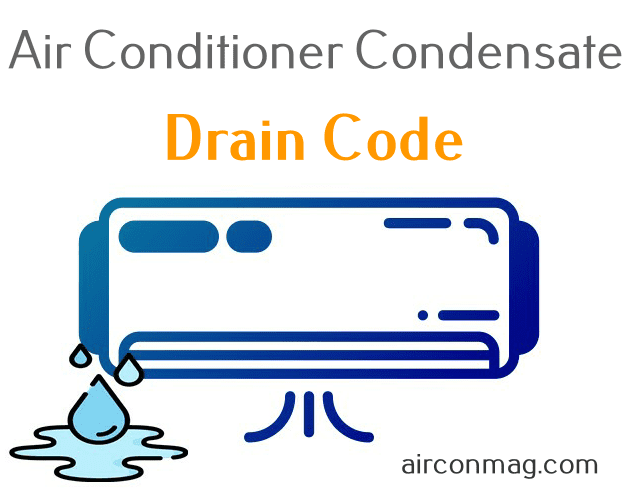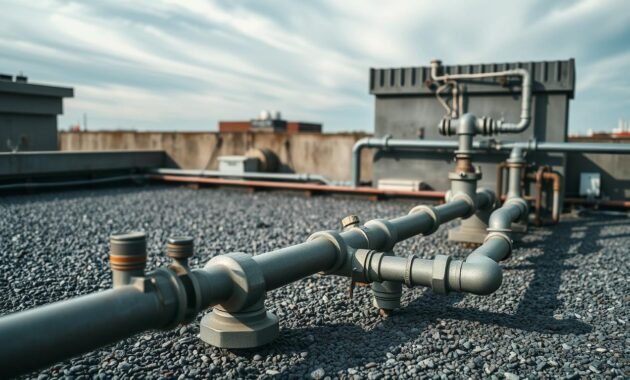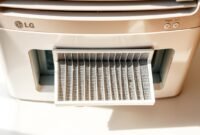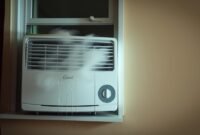Dealing with air conditioner condensate drain codes can be a big headache. It can lead to water damage, mold, and system failures. These problems can cost a lot to fix.
Ignoring the need for proper drainage is risky. It can harm your home’s structure and health. I’ll explain the key points of air conditioner condensate drain codes. This will help you avoid costly errors and keep your AC system running well.
Understanding Condensate Drain Basics
Your air conditioning system does more than cool the air. It also removes moisture, creating a need for good drainage. Knowing how this works helps keep your AC system running well and prevents water damage.

Condensate drainage removes water formed during cooling. As your air conditioner cools warm air, moisture condenses on coils. This moisture needs to be safely moved away from your system.
What is Condensate?
Condensate is the liquid water made when warm, humid air meets cold AC coils. This moisture is a natural part of cooling. Choosing the right material for your condensate drain pipe is key to avoiding leaks and ensuring water is removed smoothly.
Why Proper Drainage Matters
- Prevents water damage to your home’s structure
- Stops mold and mildew growth
- Maintains AC system efficiency
- Reduces possible repair costs
Regular use of an air conditioner condensate drain cleaner keeps drain lines clear. This prevents blockages that might cause water to back up.
Components of a Condensate System
- Drain Pan: Collects water underneath the cooling coils
- Drain Line: Moves water away from the AC unit
- Condensate Trap: Stops air from going around the drain system
- Drain Pipe: Takes water to a safe place
Understanding these basics helps you keep your air conditioning system in good shape. It also prevents wwater-related problems.
Minimum Pipe Size Requirements and Specifications
When dealing with air conditioner condensate drain systems, the size of the pipes is very important. It helps avoid clogs and ensures water drains properly. I’ve seen how ignoring these size requirements can cause big problems with your HVAC system.
The rules for pipe sizing are simple but very important. Experts say you should follow these main points:
- Minimum pipe diameter: 3/4 inch ID (inner diameter)
- Pipe size must match or exceed the drain connection size
- Consistent pipe diameter throughout the entire drainage system
It’s also important to avoid using too many fittings in the drain lines. If your air conditioner’s condensate drain gets clogged, it’s often because of the wrong pipe size or bad installation. Pipes that are too small can block water flow, leading to clogs and water damage.
For homes, I suggest measuring your drain connection carefully. Then, choose pipes that have the same size all the way through. This helps avoid clogs and makes sure water flows out of your cooling system smoothly.
Remember, different AC units might need slightly different pipe sizes. Always check local building codes and the manufacturer’s instructions for the best advice.
Proper Condensate Drain Line Installation Guidelines
Installing a condensate drain line needs precision and attention to detail. As an HVAC pro, I’ve seen many installations go wrong. Knowing how to install condensate drain piping right can save homeowners from water damage and system problems.
The success of an air conditioner condensate drain pan depends on several key installation factors. Let me guide you through the most important guidelines for optimal performance.
Slope and Pitch Requirements
Drainage starts with the right slope. I suggest a minimum pitch of 1/4 inch per foot for effective water runoff. This slope ensures condensate flows well through the drain line, avoiding blockages.
- Minimum slope: 1/4 inch per foot
- Consistent downward angle
- Avoid horizontal or flat sections
Support and Positioning
Proper support keeps the drain line stable and aligned. Use pipe hangers or supports every few feet to prevent sagging.
| Pipe Length | Maximum Support Interval |
|---|---|
| Up to 4 feet | Every 3 feet |
| 4-8 feet | Every 2 feet |
| Over 8 feet | Every 1.5 feet |
Insulation Requirements
Insulating your condensate drain line prevents condensation and water damage. I always suggest using foam pipe insulation to protect against temperature changes and moisture buildup.
- Use closed-cell foam insulation
- Cover entire length of drain line
- Seal insulation joints completely
By following these guidelines, you’ll have a strong and efficient condensate drainage system. It will protect your HVAC investment.
Air Conditioner Condensate Drain Code Compliance

Understanding the air conditioner condensate drain code can be tough. It’s important for homeowners and HVAC experts. Knowing local rules helps ensure your system is safe and works well.
Read also: How Often Should I Drain My Portable Air Conditioner?
When setting up an air conditioner condensate drain system, you must follow local building codes. These rules help avoid water damage, protect your property, and keep your system running smoothly. Here are the main things to keep in mind:
- Get the right local permits before you start
- Follow the design rules for the air conditioner condensate drain trap
- Make sure the drainage slope and pipe placement are correct
- Install secondary drain pans for extra protection
- Use materials that meet local building codes
The air conditioner condensate drain code often asks for an insulated auxiliary drain pan. This is needed for air handlers or evaporators over living areas. It helps prevent water leaks. Always check with a local building inspector or a licensed HVAC pro to see what’s needed in your area.
Following the code isn’t just about rules. It’s about looking after your investment and keeping your property safe. Regular checks and upkeep can prevent problems and save you money in the long run.
Secondary Drain Pan Requirements and Overflow Protection
Water damage from air conditioning systems is a big problem for homeowners. A secondary drain pan is key to preventing moisture issues. I’ll explain what you need for these pans and how they protect your home from water damage.
If the air conditioner’s drain line gets blocked, a secondary drain pan is your best defense. These systems catch and redirect water that could leak into your home.
Pan Dimensions and Placement
The details for secondary drain pans are important:
- Minimum height of 1-1/2 inches
- Must extend 3 inches wider on each side of the AC unit or coil
- Positioned directly beneath the primary drain pan
Overflow Prevention Methods
Keeping your home safe from water damage needs several steps:
- Install a float switch that automatically shuts down the AC system
- Use visible drain line termination points
- Create a clear path for water to be noticed if overflow occurs
I suggest getting a pro to install your secondary drain pan. This ensures it meets local codes and protects your home well.
Approved Materials for Condensate Drain Lines
Choosing the right material for your air conditioning system’s condensate drain line is key. Different materials have their own benefits, depending on your needs and local rules.
When picking materials for your condensate drain lines, consider these options:
- PVC – DWV: Most common and cost-effective choice
- Copper: Highly durable and corrosion-resistant
- CPVC: Excellent for high-temperature applications
- ABS – DWV: Strong and lightweight material
- Polyethylene: Flexible and resistant to chemical damage
Professional HVAC technicians know each material has its own traits. The best choice depends on your area’s climate, building codes, and system setup. Always check local rules to make sure you’re following them.
Using a good air conditioner condensate drain cleaner helps avoid clogs. It also makes your pipes last longer. Regular upkeep stops water damage and keeps your system running well.
Local building codes are important for choosing condensate drain pipe materials. Some places have strict rules about pipe type, size, and how to install them. Always talk to your local building department before starting any project.
- Check material compatibility with your existing system
- Verify local building code requirements
- Consider environmental factors
- Inspect pipe connections and joints
By picking the right material and keeping up with maintenance, you can have efficient air conditioning for a long time.
Trap Design and Installation Requirements
The trap is key in air conditioner condensate drainage. It stops air from getting into the system and helps water flow smoothly.
Knowing about trap design can avoid big problems. A bad installation can cause serious issues with your system.
Critical Trap Dimensions
The trap’s design is vital for managing condensate. Here are the main dimensions:
- Minimum “C” dimension of 2 inches
- Proper depth to prevent air infiltration
- Adequate slope for continuous drainage
Common Installation Mistakes to Avoid
Many traps are installed wrong, harming your HVAC system. Here are common mistakes:
- Incorrect trap depth
- Insufficient pipe slope
- Using incompatible materials
- Neglecting trap cleaning and maintenance
To avoid these mistakes, make sure your trap meets the manufacturer’s specs and local codes. Regular checks can spot problems early.
| Trap Type | Recommended Use | Key Considerations |
|---|---|---|
| P-Trap | Residential HVAC systems | Simple design, easy maintenance |
| U-Trap | Commercial applications | Greater water seal capacity |
| Field-Fabricated Trap | Custom installations | Must meet specific code requirements |
Understanding trap design helps with efficient drainage. It keeps your HVAC system safe from water damage.
Acceptable Termination Points and Locations
Choosing the right spot for your air conditioner’s condensate drain is key. It affects how well the system works and if you can use the water again. The location matters a lot.
- Indirect drain systems
- Dedicated condensate pumps
- Dry wells or leach pits
- Landscaped areas with proper drainage
- Stormwater treatment systems
But, is air conditioner condensation safe to drink? Usually, no. Even though it’s distilled, it can pick up bad stuff from the air conditioner. This makes it not good for drinking.
| Termination Location | Suitability | Considerations |
|---|---|---|
| Lavatory Tailpiece | Acceptable | Must be in same tenant space |
| Laundry Standpipe | Acceptable | Requires proper connection |
| Janitor’s Sink | Recommended | Provides easy drainage |
| Bathtub Overflow | Conditional | Must be accessible |
Getting it right means thinking about local rules and your place’s specific needs. Always talk to a licensed HVAC pro. They can make sure your condensate drain is up to code.
Maintenance Access and Cleanout Requirements
Keeping your air conditioner’s condensate drain system clean is key. It prevents water damage and keeps your system running well. Easy maintenance access lets you fix clogs quickly, avoiding big problems.
For your condensate drain system, having the right access points is vital. I’ll show you the cleanout needs for a smooth-running system.
Critical Cleanout Locations
Finding the best cleanout spots makes maintenance simpler. Here are the top areas to focus on:
- At the base of vertical drain lines
- Near primary drain connections
- Before any significant pipe bends or changes in direction
- Close to the primary drain pan
Access Point Specifications
Your cleanout points should be easy to access for cleaning. Building codes suggest several approved methods:
- Plugged tees with removable caps
- Union connections
- Short clamped hoses directly at the unit
Always check with your local code authority to follow rules. Each access point should make cleaning simple and avoid pipe cuts for clog fixes.
By using these maintenance strategies, you’ll safeguard your air conditioning system. This helps prevent water damage and extends its life.
Special Requirements for Rooftop and Freezing Conditions
Proper condensate drain piping needs extra care for rooftop setups and harsh weather. Air conditioner condensate drain systems face special challenges. They need careful planning and setup.

Rooftop setups have key concerns for condensate drainage. Drain lines exposed to sun and temperature changes are at risk. UV rays can harm PVC pipes, causing them to warp and fail.
- Insulate all exposed condensate drain lines
- Use UV-resistant materials for rooftop piping
- Provide adequate support for exterior drain lines
When it gets cold, stopping drain lines from freezing is key. Here are some ways to keep your system safe:
- Install heat tracing cables along drain lines
- Apply proper insulation to vulnerable pipe sections
- Ensure consistent slope to prevent water accumulation
| Condition | Recommended Protection |
|---|---|
| Rooftop Exposure | UV-resistant pipe coating |
| Freezing Temperatures | Heat tape and insulation |
| Extreme Climate | Winterization and regular inspection |
Using these special protection methods helps avoid clogs. It ensures your air conditioner’s condensate drain works well, even in tough weather.
Conclusion
Learning about air conditioner condensate drain codes is key to protecting your home and HVAC system. We’ve covered important details about proper condensate drain piping. This can help avoid water damage and expensive repairs.
It’s vital to be precise with condensate drainage. Every little thing, like pipe slope and material, counts. The air conditioner condensate drain code is more than rules. It’s a guide to keeping your system running well and preventing moisture problems in your home.
While this guide offers a lot of information, it’s best to work with licensed HVAC pros. They know local building codes and can make sure your system is safe and efficient.
By understanding and using the right condensate drain methods, you can protect your property. You’ll also extend your air conditioning system’s life. And you’ll have peace of mind, knowing your home is safe from water-related issues.


